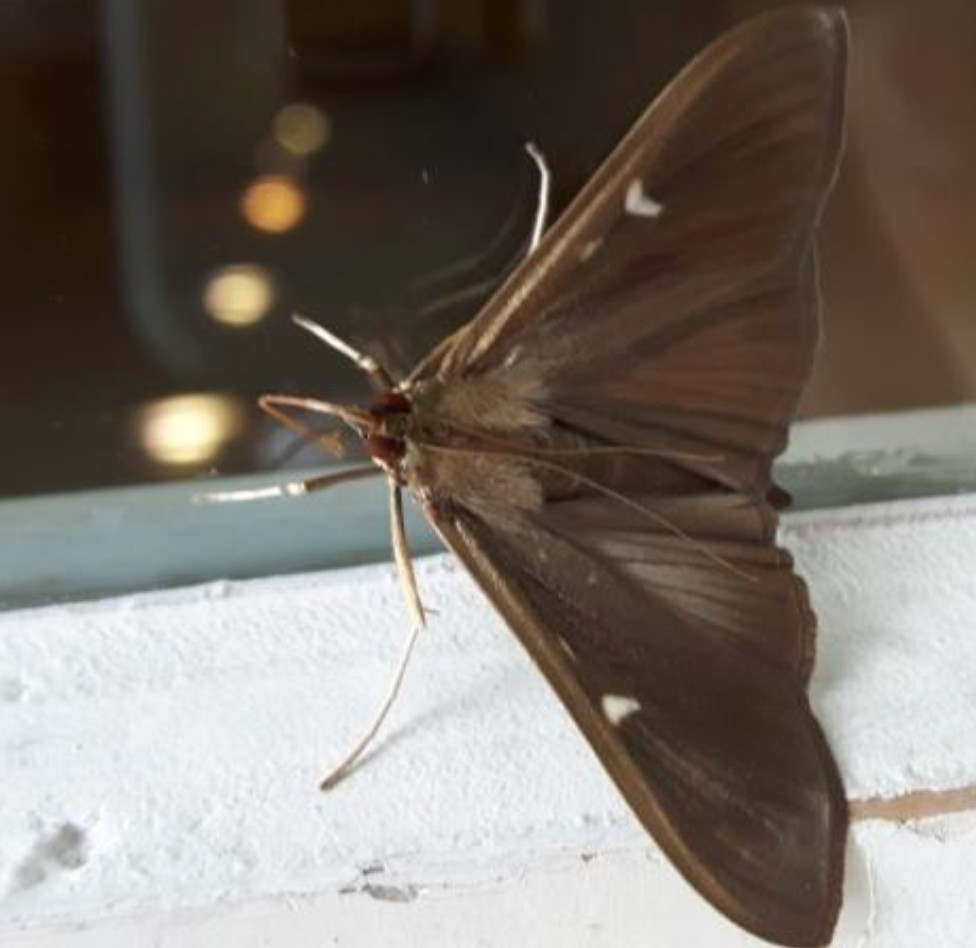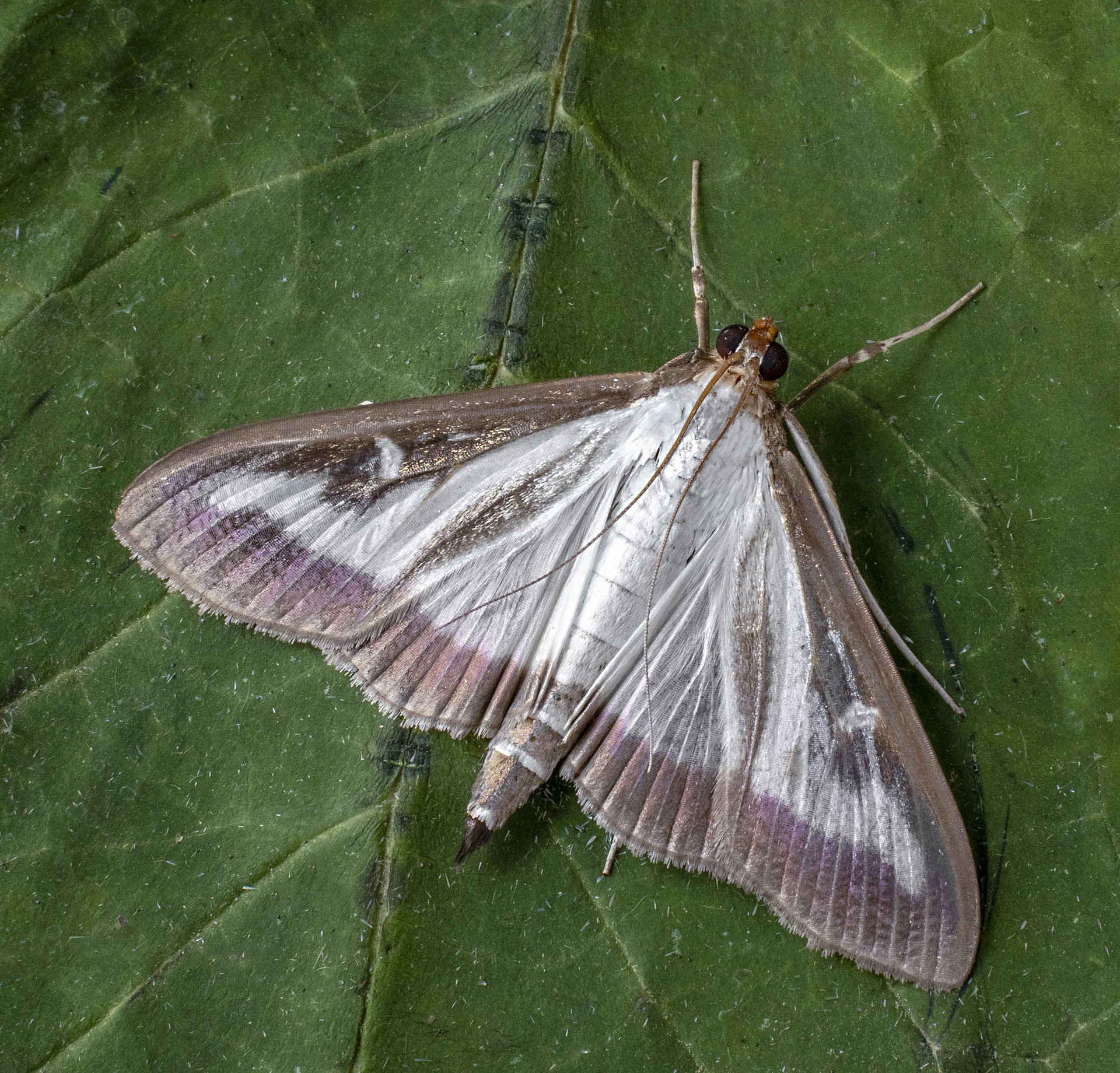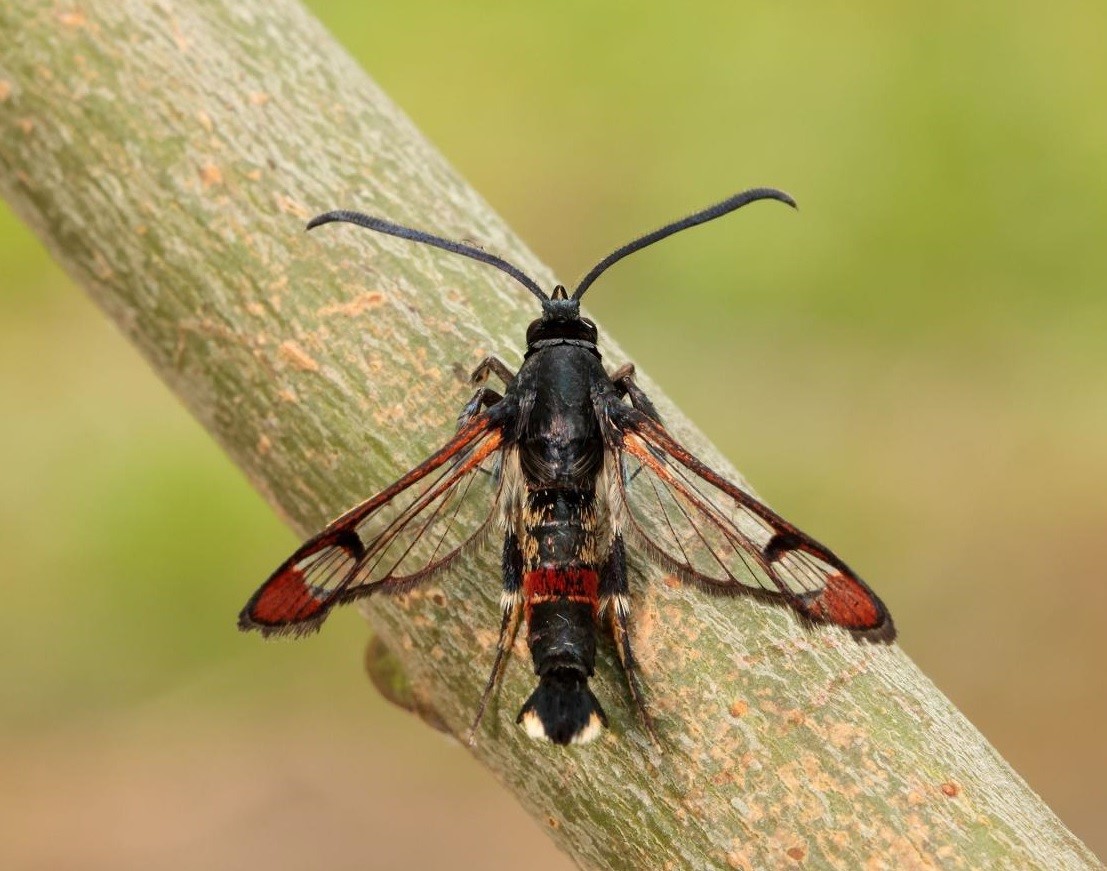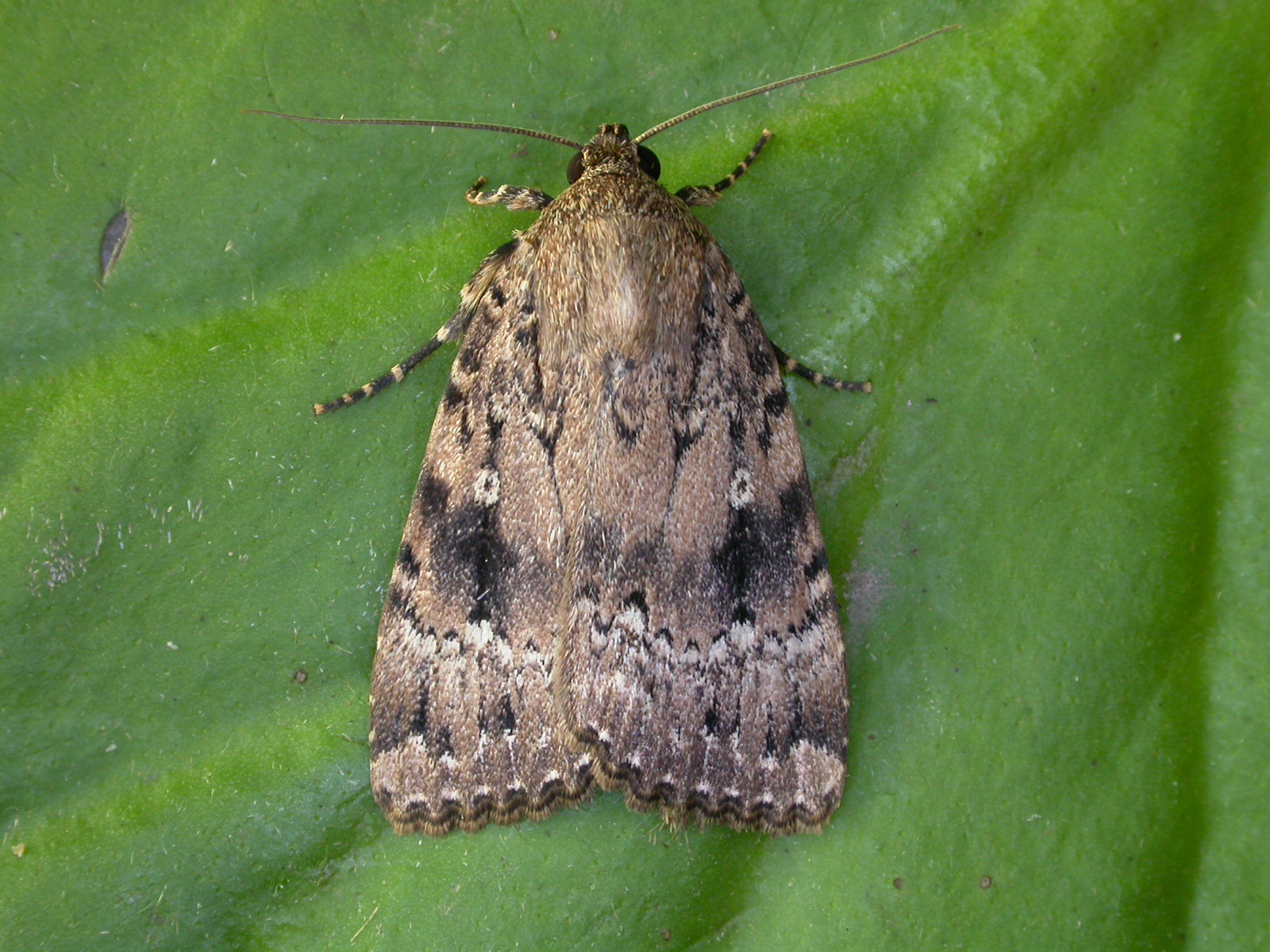No, this is not a D&G moth – yet! I just came across a paper on the spread of the Box-tree moth in the Entomologist’s Record and Journal of Variation (131, 2019) and at the same time found out that the first record of this moth (see first photo below) has been made for Edinburgh – the third record for Scotland. This coincidence suggested that this moth might well be on its way to D&G sometime soon and prompted this MotW!
This is a micro moth in the family Crambidae with the general shape of the common Mother of Pearl moth. Normally it is white with a dark brown border round its wings (see second image) but the first Scottish specimen was the quite common melanic form. It has been found on the wing from the end of April to the beginning of November peaking in May and August.
As its name suggests (also known as the Boxworm or Box-tree Webber) the moth’s caterpillars feed on the leaves of Box chewing away the top surface of the leaf to leave a ‘window’ of the lower cuticle. At the same time the larva produces silk forming webbing around the plant. These feeding signs and silk webs indicate the presence of this moth but the thin caterpillars with a black head, green striped back, black sides with several small black ‘warts’ on each segment confirm the identification. The caterpillar overwinters in the larval stage and eventually pupates on the leaves.
Originally this moth lived in China and Korea and first appeared in Europe, in Germany in 2006. The following year it reached the UK in Surrey and by 2010 there were 10 British records from 9 sites. BY 2015 it had reached Wales and had 113 records from 24 sites. Last year it reached Scotland with two records from Fife and there were 9,175 British records from 260 sites. This year it has appeared in Edinburgh.
Box is a native tree in the UK growing to 12 metres especially on chalk in the south of England. However, it is better known as an ornamental shrub grown for topiary in gardens throughout the country. Large numbers of small Box plants, usually as Box ‘balls’ have been imported recently from China and there is no doubt that the moth has come with them. There is a real concern that this species, which can quickly defoliate a bush or a tree and even kill them, could be a major pest in this country threatening our native woods in the south and our ornamental shrubs throughout the UK. Most ornamental Box shrubs are found in England and in Scotland of those that have been planted most are on the east side of the country (hence this is where the moth first appears?). D&G is relatively free from Box balls of hedges although my garden is full of them and there are plenty in every garden centre!
The astonishing speed with which this small moth has spread (although mentioned it doesn’t appear in the micro moth field guide) is an indication of what can happen when a native moth is introduced to an entirely different ecosystem. Will we see it here next year?





